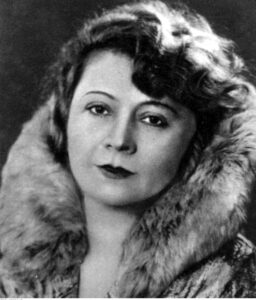Hermina Naglerowa was born in the village of Zaliski near Brody on the Polish-Ukrainian frontier. She came from a Galician, German-Jewish landowner family. She began her career in Lviv, where she obtained a doctorate on philosophy at the university and began publishing her first papers in the local press, as well as in ‘The Polish Courier’ in Vienna. Then, after moving to Warsaw, she worked as a teacher, but also ran a famous artistic salon, drawing inspiration from the traditions of Young Poland. She was active in the Trade Union of Polish Writers, the Women Citizens’ Work Association and in the Pen Club. She wrote to the women’s magazine ‘Bluszcz’, but she did not act as a radical emancipation activitist. She published under the pseudonym Jan Stycz and she never said about herself that she was a feminist.
The outbreak of World War II was a turning point in Naglerowa’s life. During the September Campaign, her husband Leon Nagler, a police officer, was summoned to Lviv, where he disappeared without a trace. The poet followed her husband and on the night of January 23-24, 1940, she was arrested and accused of anti-Soviet activity. The reason was the story The Lilac Branch published before the war, in which Naglerowa described the shooting of a woman activist of the Polish Military Organization by the Bolsheviks in 1920. The writer thought that she had been betrayed by her fellow writers. She was sentenced to eight years of exile to Kazakhstan, where she worked as a laborer and a night watchman in a kolkhoz.
Under the soviet “amnesty” of 1941, she joined the Women’s Auxiliary Service, following the entire combat trail with Anders’ Army. In Egypt she took an officer course, receiving the rank of lieutenant, while in Italy she was promoted to the rank of captain. On the route from Buzułuk to Italy, she was involved in the organization of a common room, gave lectures, and also edited the magazine ‘The Enlisted Woman’.
After demobilization, she emigrated to Great Britain, where she wrote for ‘The News’ – the Polish émigré weekly and worked in the Polish Writerss’ Union in Exile, becoming a leading activist of London emigration and one of the most important Polish writers in exile. She died in 1957.
Translated from Polish: Sylwia Szarejko, Kamila Czechowska
Biogram based on the book: S. Szarejko, Kobiety niepokonane/Undefeated Woman, Białystok 2019, edited by Sybir Memorial Museum




